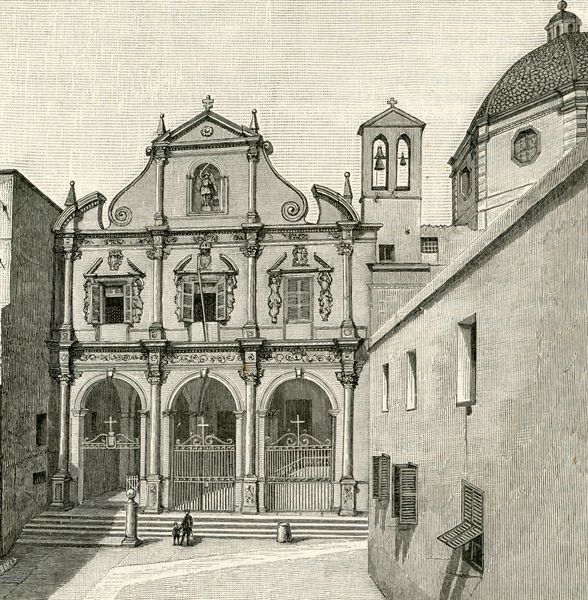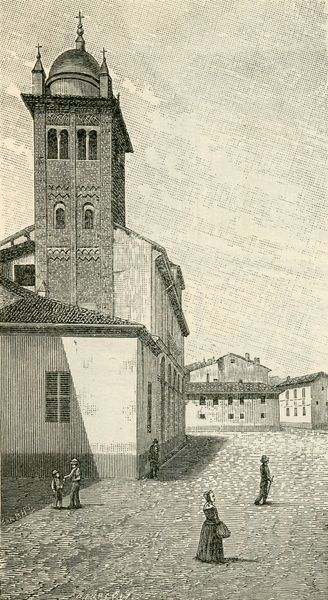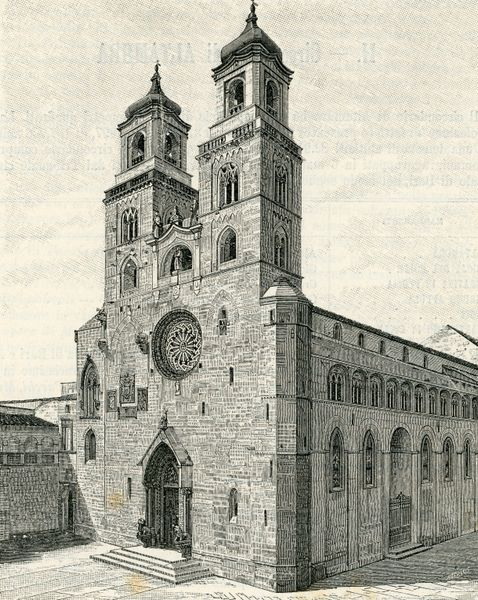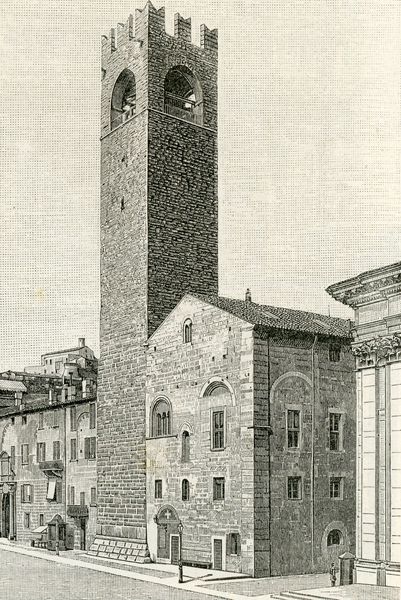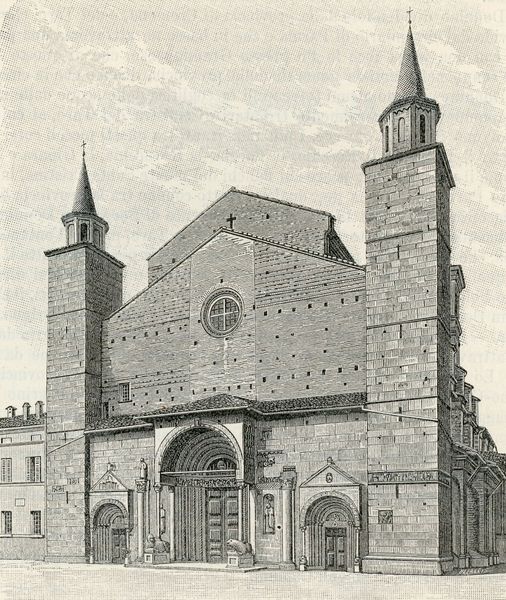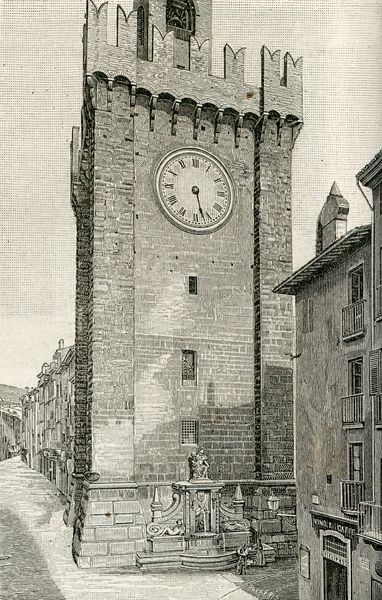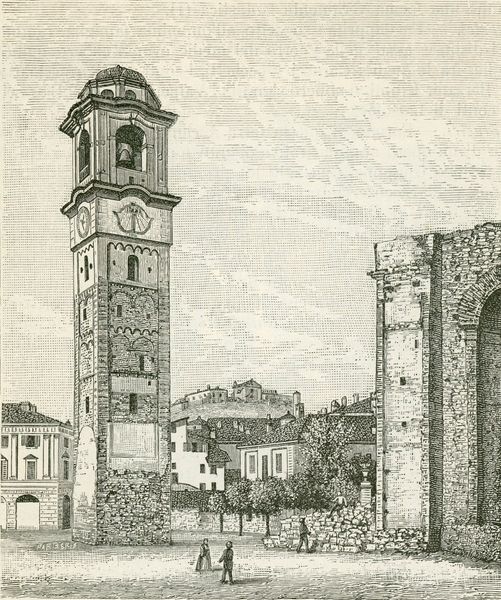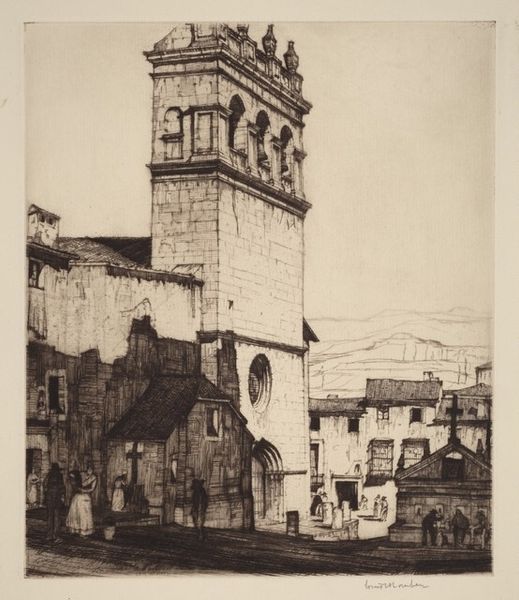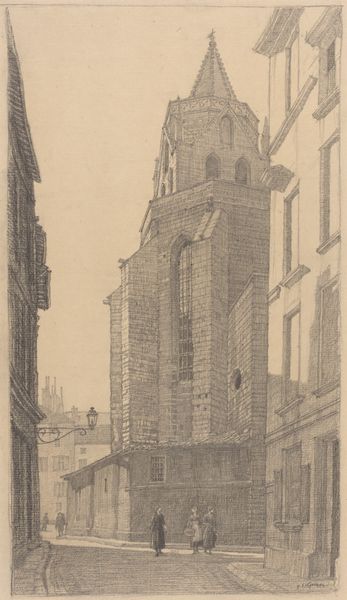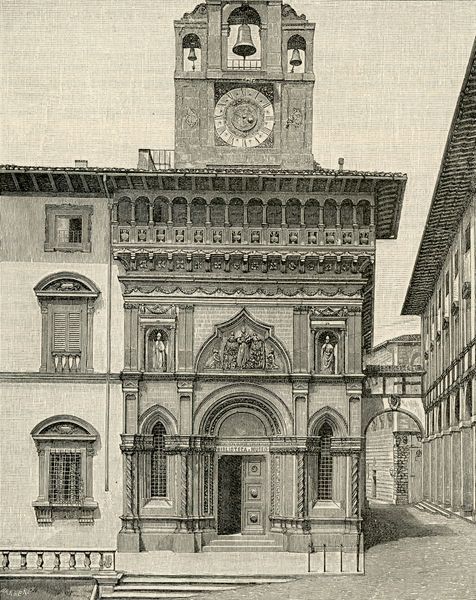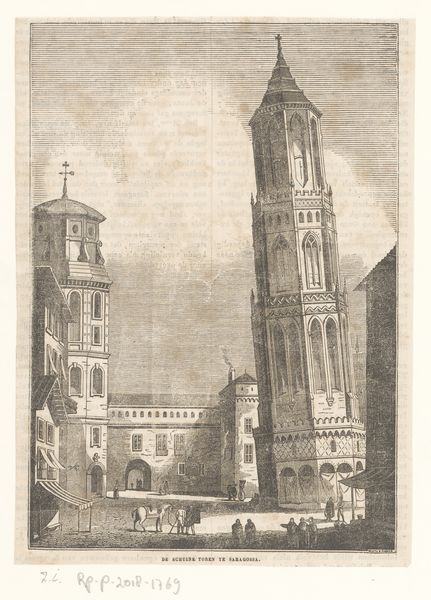
drawing, print, paper, architecture
#
drawing
# print
#
paper
#
historic architecture
#
romanesque
#
architectural drawing
#
architecture drawing
#
cityscape
#
paper medium
#
architecture
Copyright: Public domain
Curator: Welcome. We’re standing before Giuseppe Barberis' "Campanile Della Chiesa Di San Benigno", created around 1890. It is rendered in drawing and print on paper medium. Editor: What strikes me immediately is the almost overwhelming sense of verticality. The tower dominates the composition, seemingly pushing beyond the frame itself. There is also something stark and slightly grim about its monumentality, rendered with precise but heavy strokes. Curator: Absolutely, and if you look closely at the top of the tower, the cross implies it is the gate toward the eternal realms and our potential salvation. And below, each tiered window decreasing in size creates the impression of spiritual ascension towards this final symbol. Editor: While that ascent is suggested through classical Christian visual symbolism, the tower also symbolizes temporal power—architecture often does. These religious structures of the past have a fascinating intersection with political dynamics that often oppressed or excluded segments of the community, who wouldn't see themselves symbolized within that 'salvation'. Curator: That's a critical point. The campanile, besides being an essential structure of Romanesque churches, has also functioned as a kind of secular 'town watch' for local communities in many towns. It represented a protective force, acting as a kind of sacred communal space for shared defense, sounding alarms for the residents in times of social unrest. Editor: Its visual power, even just captured on paper here, is also derived from what seems like it being intentionally separated from its larger narrative. It does not seem welcoming here, but rather aloof in ways that I wonder if local populations found the church a site for spiritual, if not social connection. Curator: I agree with this in-betweenness—this image certainly emphasizes architectural and historical solidity over the comfort and grace that might define its spiritual counterpart. A lasting impression of power seems evident. Editor: Precisely. This image gives insight not only to sacred practices but also into the social landscape during this particular time, reminding us that salvation for some can reflect an ambivalent salvation for others. Curator: I will certainly hold onto your interpretation of it, framing a much richer picture of continuity in Italian culture and its ever shifting interpretations.
Comments
No comments
Be the first to comment and join the conversation on the ultimate creative platform.
